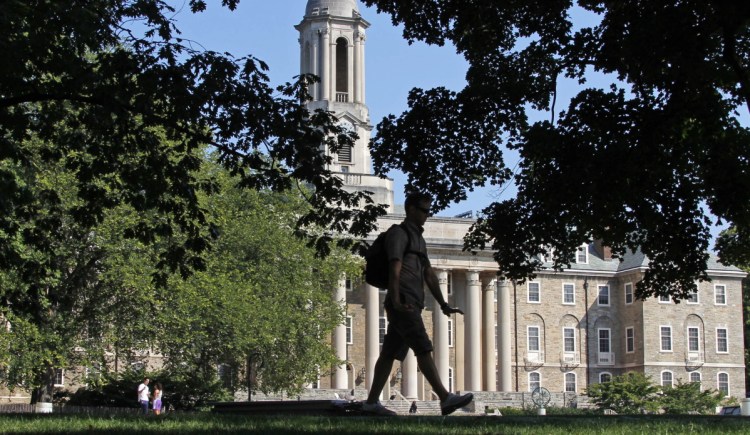Haunted by costly degrees and insurmountable student debt, American college students now spend more time working paid jobs than in lectures, the library or studying at home.
The vast majority of current students – 85 percent – work while enrolled, according to an HSBC survey published Thursday. Students spend an average of 4.2 hours a day working paid jobs, which is more than double the time they spend in the library, nearly two hours more than they spend in class and 1.4 hours more time than they spend studying at home.
“The economics of the debt crisis have become a major distraction to students’ education,” said John Hupalo, founder and chief executive officer of Invite Education, an education financial planner. “Students’ first priority should be to get value out of their education, not squeezing out hours at a job in order to make money to sustain that education.”
The HSBC study was conducted by Ipsos MORI, which surveyed 1,507 students aged 18 to 34 currently enrolled in undergraduate and postgraduate programs and 10,478 parents with at least one child aged 23 or younger currently enrolled at a university. The survey sample was drawn from nationally representative online panels in 15 countries and territories from March to April 2018.
The United States spends more per college student than nearly every country in the world, according to a September report from the Organization for Economic Cooperation and Development. And the cost of tuition is at an all-time high, bringing with it the highest rate of student loan debt in history.
Student loans are now the second-largest category of U.S. household debt, topping nearly $1.4 trillion, according to Bloomberg Intelligence. The burden is even larger for younger Americans with entry-level wages and salaries. Student loans currently make up 40 percent of all millennial debt.
Students tend to rack up personal debt as well, spending an average of $4,321 to pay back credit cards, personal loans and student debt over the course of their degree. That’s nearly $1,000 more than they spend on academic books over the same period, according to the HSBC report.
American students are also responsible for funding a larger portion of their expenses than students elsewhere in the world. American parents fund an average of $17,314 on tuition fees, accommodation and other bills, but students spend nearly $100,000 while earning a college degree. That leaves a funding gap of more than $80,000.
“The fundamental issue is that families and students don’t have a realistic knowledge of the actual cost of an education in advance,” Hupalo said.
Nearly three in four American parents rely on their day-to-day income to help fund their child’s education, rather than resort to savings or borrowing, the study shows. Only quarter of parents fund their child’s savings from a specific education savings or investment account, which is slightly ahead of the global average.
But it’s not enough. Students still report feeling overwhelming anxiety about their financial situation and, in turn, their academic performances. Six in 10 students said they feel anxious about their finances “frequently” or “all the time,” according to a report released Tuesday by Chegg, an education technology company. And female students were 28 percent more likely than male students to be stressed by financial concerns – a statistic in line with the student debt gap between women and men. (Women and people of color disproportionately bear the burden of student loan debt).
“There’s no silver bullet,” Hupalo said. “Despite these statistics, many students are actually handling these responsibilities well. And for some, taking on a bit more paid work could actually reduce their financial burden.”
Send questions/comments to the editors.



Comments are no longer available on this story